20 Avocado Types: A Guide to Type A and B Varieties
- April 9, 2024
- 0 comment
Avocados aren’t just a delicious topping for toast or the star of guacamole they come in a variety of types that suit different climates, tastes, and growing conditions. Let’s explore the Top 20 Avocado Types, including the popular Type A and B avocados, to uncover the diversity behind this beloved fruit. Whether you’re curious about the best avocado types or interested in learning about different types of avocados, this guide covers it all.
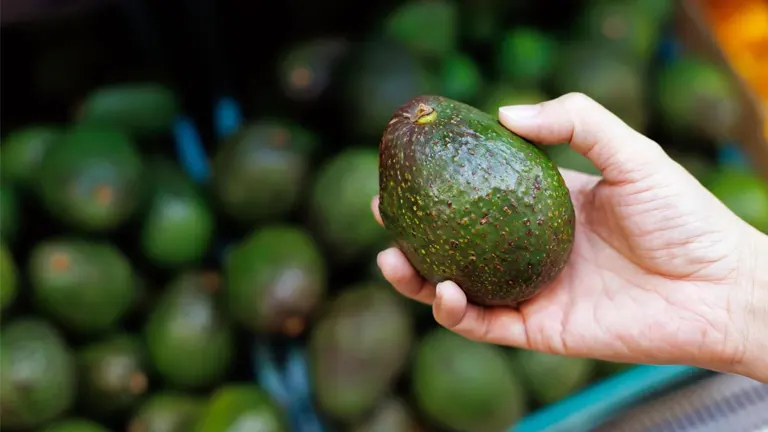
From the creamy, nutty flesh of the Hass avocado to the cold-hardy Brazos Belle, and the versatile Wurtz with its dual flowering ability, avocados offer a wide array of unique characteristics. This guide dives into the cultivation secrets and distinct traits of these avocado varieties, perfect for gardeners wanting to diversify their orchards or food lovers exploring different types of avocados. Beyond the common supermarket options, discover the best avocado types and their remarkable diversity.
Type A Avocado Varieties
1. Hass Avocado
- Zones: 9-11
- Growth: Up to 35 feet but can be pruned shorter
- Cold-Hardiness: Frost-sensitive, less heat-tolerant
- Fruit: Creamy, nutty, high-fat flesh; thick skin turns from green to black when ripe
- Bloom & Ripen: February-May, fruits ripen April-September
- Noteworthy: Originated in 1930s California, Hass thrives solo but benefits from a pollinator

2. Pinkerton Avocado
- Zones: 9-11
- Growth: Medium size, sprawling canopy
- Cold-Hardiness: Down to 30°F
- Fruit: Oblong, slender, rich flavor, small pit; skin stays green
- Bloom & Ripen: Spring, fruits from November to April
- Noteworthy: Thrives with a Type B pollinator for optimal fruit set
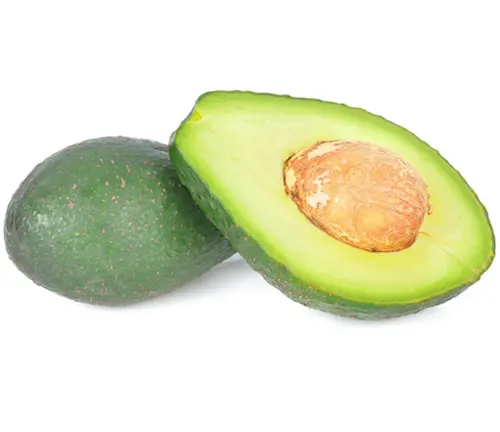
3. Reed Avocado
- Zones: 10-11
- Growth: Slender, upright, can be pruned for compactness
- Cold-Hardiness: Frost-sensitive, more heat-tolerant
- Fruit: Large, round, extremely buttery flesh
- Bloom & Ripen: Spring-summer, fruits the following summer
- Noteworthy: Low water needs, good for beginners, prolific without pollinators
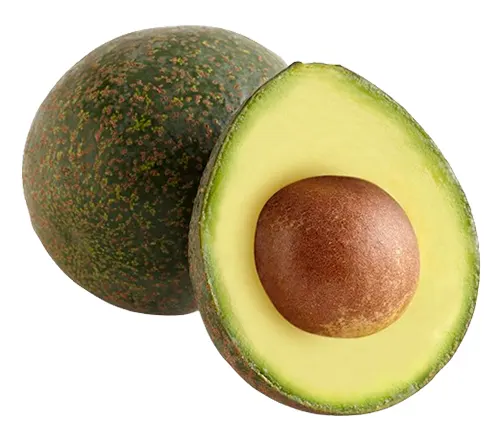
4. Lamb Hass Avocado
- Zones: 9-11
- Growth: Medium size, upright and compact
- Cold-Hardiness: Below 30°F, heat-tolerant
- Fruit: Hass-like, high oil content, pebbly skin
- Bloom & Ripen: Late winter-spring, April-November
- Noteworthy: Longer season than Hass, more cold and heat-resistant
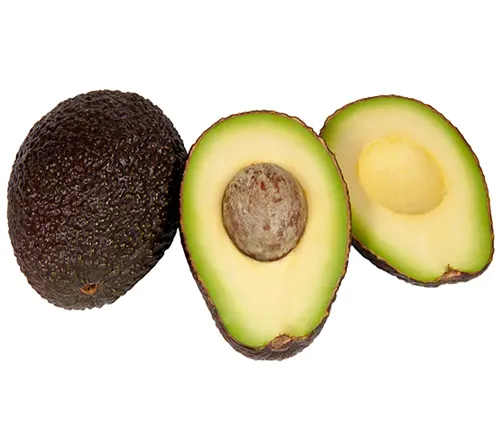
5. Carmen Hass Avocado
- Zones: 9-11
- Growth: Medium-large, round canopy
- Cold-Hardiness: Down to 30°F
- Fruit: Smaller than Hass, pebbly skin, high oil content
- Bloom & Ripen: Spring and late summer, November-September/October
- Noteworthy: Two blooming seasons, earlier fruiting than Hass
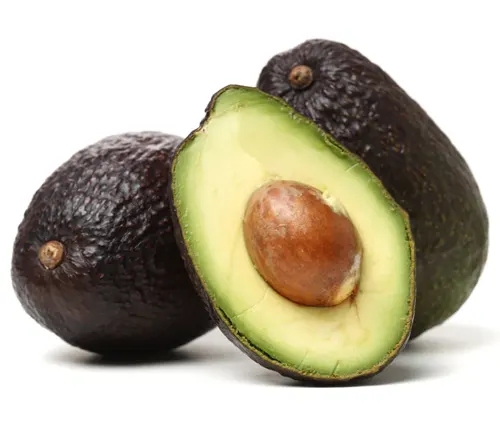
6. Gwen Avocado
- Zones: 9-11
- Growth: Small, maxes at 15 feet, suitable for containers
- Cold-Hardiness: Down to 30°F
- Fruit: Larger than Hass, thick skin, nutty and buttery
- Bloom & Ripen: Spring, May-September
- Noteworthy: Ideal for small spaces, prolific fruiting
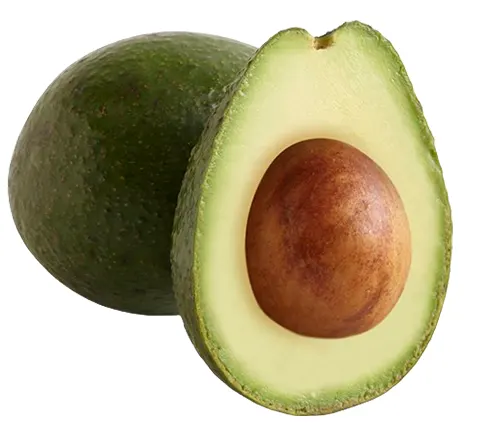
7. Mexicola Grande Avocado
- Zones: 8b-11
- Growth: Vigorous, can reach over 40 feet
- Cold-Hardiness: Down to 20-22°F
- Fruit: Large, nutty flavor, dark green to black skin
- Bloom & Ripen: Mid spring-early summer, August-October
- Noteworthy: Most cold-hardy Type A, heat-hardy too
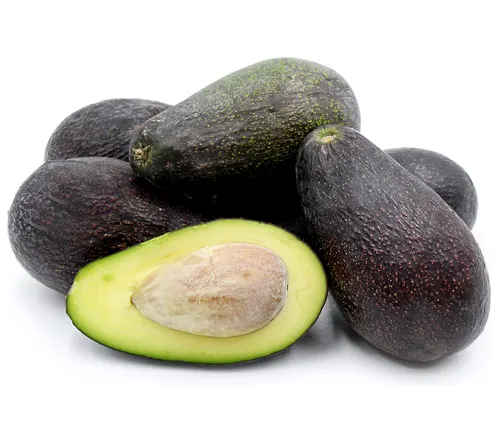
8. Stewart Avocado
- Zones: 8b-10
- Growth: Medium, compact, 20-25 feet tall
- Cold-Hardiness: 20-22°F
- Fruit: Creamy, nutty, dark purple to black skin
- Bloom & Ripen: Spring, October-December
- Noteworthy: Descendant of Mexicola, compact with B-like traits
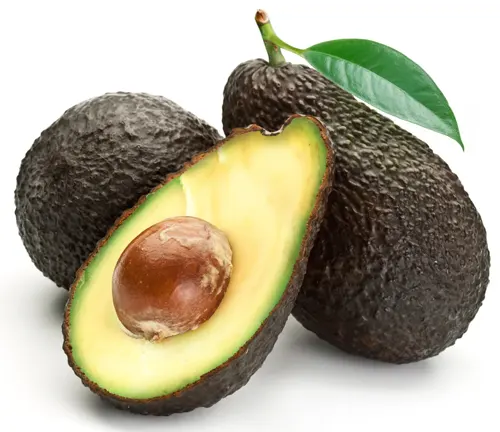
9. Holiday Avocado
- Zones: 9-11
- Growth: Semi-dwarf, 12-15 feet tall
- Cold-Hardiness: Sensitive below 30°F
- Fruit: Large, oval, green when ripe, good flavor
- Bloom & Ripen: Spring, September-January
- Noteworthy: Named for its ripening season, ideal for small yards
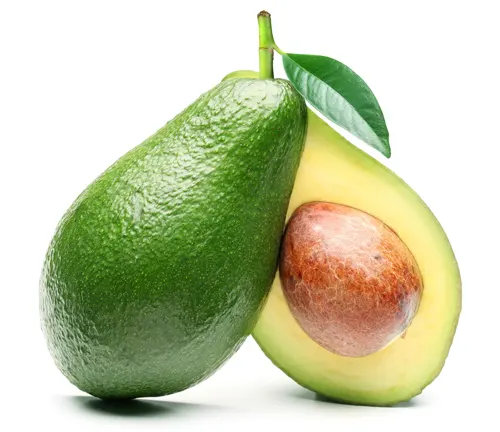
10. Pryor/Del Rio (Fantastic) Avocado
- Zones: 8-11
- Growth: Medium-large, 25-30 feet high
- Cold-Hardiness: 15 to 18°F
- Fruit: Small, creamy, mild flavor, green thin skin
- Bloom & Ripen: Winter-late spring, August-November
- Noteworthy: Consistent characteristics on Pryor rootstock, good cold resistance
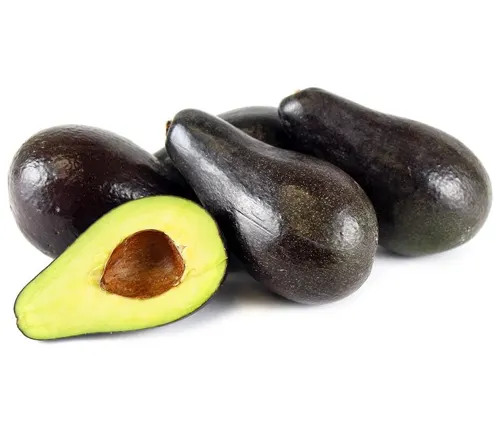
11. Opal (Lila) Avocado
- Zones: 8b/9-11
- Growth: Smaller tree, 15-20 feet
- Cold-Hardiness: 15°F briefly, usually 20-22°F
- Fruit: Rich, nutty, medium-size, green when ripe
- Bloom & Ripen: Late winter-spring, July-November
- Noteworthy: Second most cold-hardy Mexican variety, ideal for varied climates

Type B Avocado Varieties
1. Fuerte Avocado
- Zones: 9-11
- Growth: Large tree, up to 35 feet, with a wide canopy
- Cold-Hardiness: Down to 28°F
- Fruit: Large, green, creamy, less oily than Type A
- Bloom & Ripen: May-November, fruits from November to April
- Noteworthy: A prime cross-pollinator for Hass, Fuerte combines excellent flavor with robust growth.
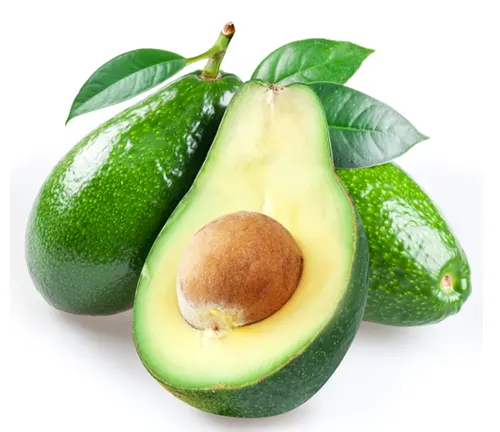
2. Bacon Avocado
- Zones: 8b-11
- Growth: Medium, upright, around 20 feet tall
- Cold-Hardiness: 24-26°F
- Fruit: Large, green, slightly less oily, great for scooping
- Bloom & Ripen: Late winter-spring, December-February ripening
- Noteworthy: Bacon thrives independently but also complements Type A varieties well.
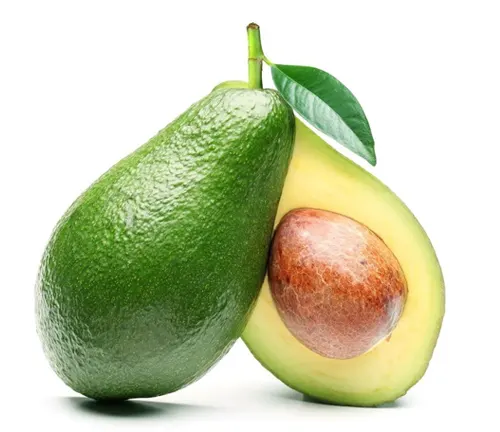
3. Sir Prize Avocado
- Zones: 9-11
- Growth: Medium, upright, 25-35 feet tall
- Cold-Hardiness: Below 32°F
- Fruit: Creamy, nutty, larger than Hass with a smaller pit
- Bloom & Ripen: Spring-summer, ripens in early winter
- Noteworthy: Offers a high flesh-to-pit ratio and less browning on exposure.
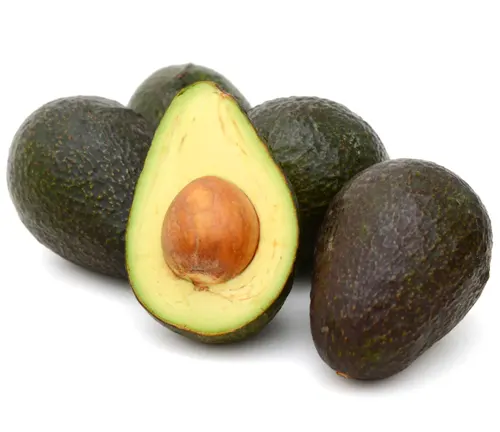
4. Zutano Avocado
- Zones: 8b-11
- Growth: Large tree, over 40 feet
- Cold-Hardiness: Down to 26°F
- Fruit: Good-tasting, medium-large, less creamy
- Bloom & Ripen: Spring, ripens October-February
- Noteworthy: Consistently high-yielding, Zutano is a garden-friendly choice.
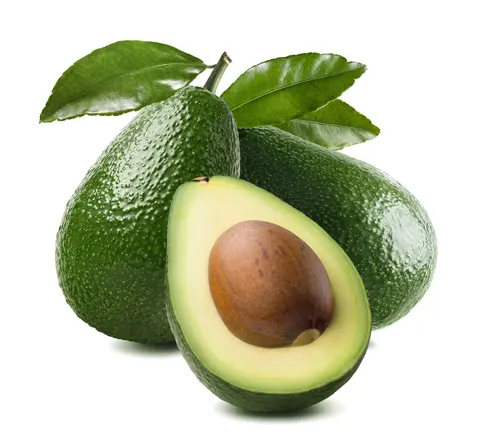
5. Winter Mexican Avocado
- Zones: 8b-11
- Growth: Can reach 40 feet or more
- Cold-Hardiness: 20-25°F
- Fruit: Similar to Hass but smaller, early producer
- Bloom & Ripen: Mid spring-early summer, November-January
- Noteworthy: Despite its name, it’s not the coldest hardy but ripens in winter.
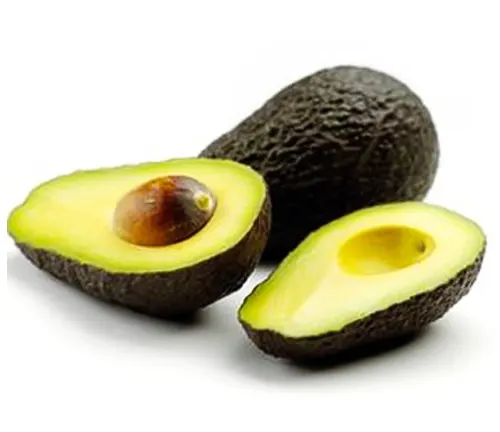
6. Brogdon Avocado
- Zones: 8b-11
- Growth: Over 30 feet tall, dense canopy
- Cold-Hardiness: Down to 24°F
- Fruit: Buttery, large, dark purple when ripe
- Bloom & Ripen: Mid spring-early summer, August-November
- Noteworthy: Brogdon’s rich, buttery flesh makes it a guacamole favorite.
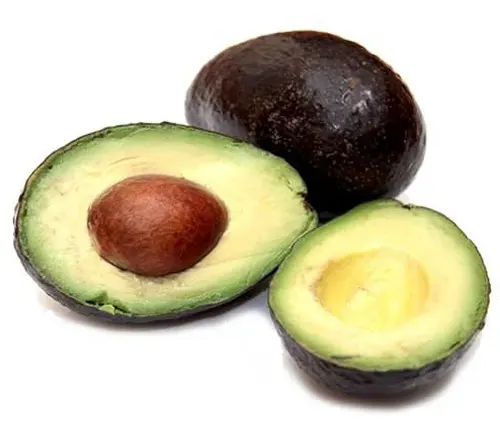
7. Joey Avocado
- Zones: 8b-11
- Growth: Up to 25 feet or taller
- Cold-Hardiness: 15-18°F briefly
- Fruit: Small, flavorful, nutty, dark purple to black skin
- Bloom & Ripen: Spring, August-October
- Noteworthy: Joey is noted for its self-fruitfulness, thriving even without a pollinator.
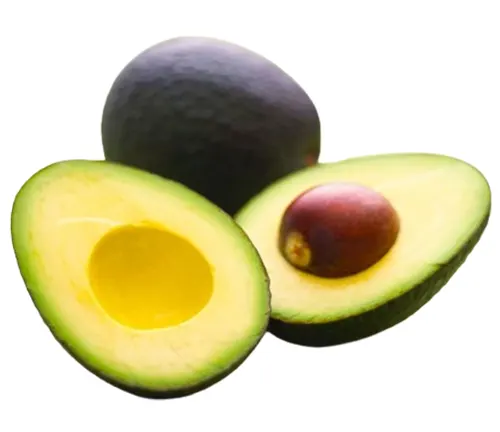
8. Wilma aka Brazos Belle Avocado
- Zones: 8-11
- Growth: 20-25 feet tall, early fruiting
- Cold-Hardiness: 15-18°F
- Fruit: Medium, long, narrow, Hass-like flavor, purplish black skin
- Bloom & Ripen: Winter-spring, October-November
- Noteworthy: Wilma, with its trusted rootstock, ensures consistent cold tolerance and quality fruit.
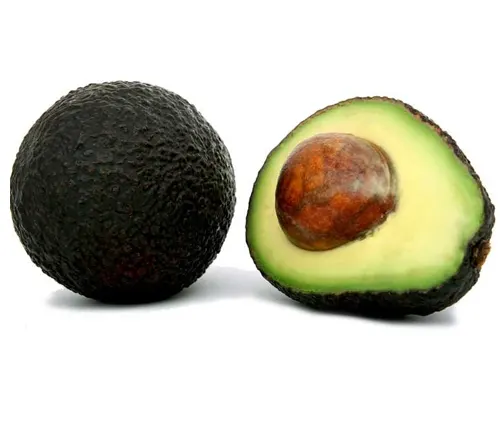
Both Type A & B Flowers
Wurtz (Little Cado) Avocado
- Zones: 9-11
- Growth: 10 to 15 feet, ideal for small spaces
- Cold-Hardiness: Frost-sensitive below 32°F
- Fruit: Small to medium, good-tasting, green-skinned
- Bloom & Ripen: Late winter to spring, with fruits maturing from May to September
- Noteworthy: Self-pollinating with both Type A and B flowers; perfect for container gardening
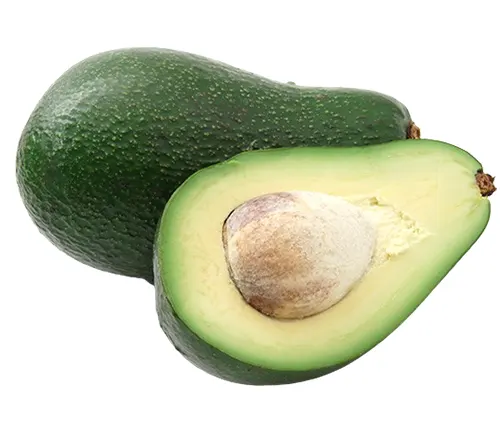
Understanding Avocado Varieties and Their Cross-Pollination
Diving into the realm of avocado cultivation reveals a fascinating dynamic between the two primary types of avocados, Type A and Type B. Each type plays a unique role in the pollination process, essential for fruit development. Here’s a closer look at these categories and their significance in growing healthy avocado trees.
Type A and Type B Avocado Varieties
Type A avocados, such as Hass, are characterized by their flowering pattern, where their female parts are available in the morning, transitioning to male in the afternoon of the next day. This group includes varieties like Hass, Lamb Hass, and Gwen, known for their rich, creamy texture and high oil content.
Type B avocados, on the other hand, display the opposite pattern: their male parts are available in the morning, switching to female in the afternoon. Fuerte and Bacon are examples of Type B, often having thinner skins and a slightly more watery flesh compared to Type A varieties.
Cross-Pollination: Maximizing Fruit Production
Cross-pollination between Type A and Type B avocados can significantly enhance fruit yield. While many avocado trees are self-fruitful, having both types nearby can lead to a more successful crop. For instance, Hass (Type A) and Fuerte (Type B) are commonly paired in commercial orchards to improve pollination efficiency and fruit set.
Pollination Proximity and Practicality
The proximity required for effective cross-pollination can vary, with recommendations ranging from 25 to 30 feet to within a few neighborhood blocks. The local prevalence of avocado trees can also influence pollination success, meaning even solo trees in avocado-rich areas may fare well.
The Unique Biology of Avocado Flowers
Avocado flowers are unique in their sexual transformation, complicating self-pollination but creating opportunities for biodiversity and cross-pollination strategies. This botanical characteristic underlines the need for diverse planting in avocado cultivation, ensuring a balance between Type A and Type B varieties for optimal fruit production.
The Avocado Growing Essentials
Avocado trees, irrespective of type, share common requirements: they thrive in USDA hardiness zones 8 or 9 through 11, need ample sunlight and water, and demand well-draining soil to avoid root rot. While purchasing a grafted nursery tree can yield fruit within a few years, growing avocados from pits is a longer process, often taking over a decade to bear fruit. Importantly, avocados mature on the tree but ripen off it, necessitating a post-harvest ripening period.
More Articles You Might Enjoy:
- 10 Hass Avocado Growing Tips You Should Know!
- Why Hass Avocado Seeds Don’t Grow Into Hass Trees
- The Rise of the Avocado: A Journey from Ancient Orchards to Global Superfood
- How to Grow Hass Avocado: Simple Steps for Beginners
- How to Fertilize Avocado Tree: A Step-by-Step Guide for Lush Growth
- How to Grow an Avocado Plant: From Seed to Sprout
- Hass Avocado
FAQs
- What makes the Wurtz avocado unique among other varieties?
Explore the dwarf nature of Wurtz (Little Cado), its ability to self-pollinate, and its suitability for small spaces and container gardening. - Can I grow different types of avocado trees together for better yield?
Discuss the benefits of cross-pollination between Type A and Type B avocados and how it can increase fruit production. - Why are some avocado varieties called ‘greenskins’ and others not?
Explain the difference in skin texture and color between Type A and Type B avocados, focusing on the thinner, greener skin of Type B varieties. - What are the best conditions for growing a Hass avocado tree?
Detail the specific climate, soil, and care requirements that make for the optimal growth and fruiting of a Hass avocado. - How long does it take for an avocado tree to bear fruit?
Clarify the time frames for fruit production between grafted nursery trees and those grown from pits, highlighting the variances among different avocado types. - Are there any avocado varieties that can withstand colder climates?
Identify which avocado varieties, such as Mexicola Grande, are more cold-hardy and suitable for growth in cooler regions. - What should I know about planting avocados in containers?
Offer guidance on container size, soil type, watering, and fertilization needs for successfully growing avocados in containers, particularly dwarf varieties like Wurtz. - How can I tell when an avocado fruit is ready to harvest?
Discuss the signs of maturity in avocado fruits, including changes in color and texture, and the correct timing for harvesting to ensure ripeness after picking. - Why is cross-pollination important for avocado trees, and how can I facilitate it?
Explain the mechanics of avocado flower pollination and provide tips for arranging Type A and Type B trees in proximity to enhance fruit set. - What are some lesser-known avocado varieties that offer unique flavors or textures?
Highlight some of the less common varieties, such as Lamb Hass or Gwen, and describe their distinct taste and texture profiles compared to more mainstream types.
Dived into the avocado world with us? We’d love to hear your experiences and tips! Which variety is your favorite, and do you have any unique growing insights? Share your thoughts and join the avocado-loving community in the comments below. Don’t forget to pass this guide along to fellow enthusiasts and let’s spread the avocado joy together!

Kristine Moore
Forestry AuthorI'm Kristine Moore, a seasoned garden landscaping professional with over 30 years of experience. My extensive career has been dedicated to transforming outdoor spaces into stunning, sustainable landscapes. With a deep understanding of horticulture, design principles, and environmental stewardship, I have become a respected figure in the field, known for creating harmonious, visually appealing, and eco-friendly gardens. My commitment to excellence and continuous learning in landscaping trends and techniques has solidified my reputation as an expert in garden design and implementation.




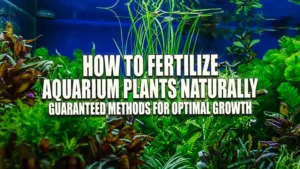





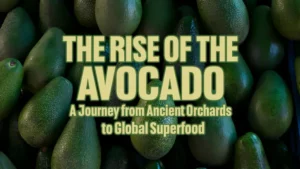

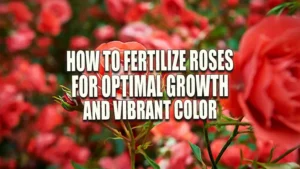
Leave your comment